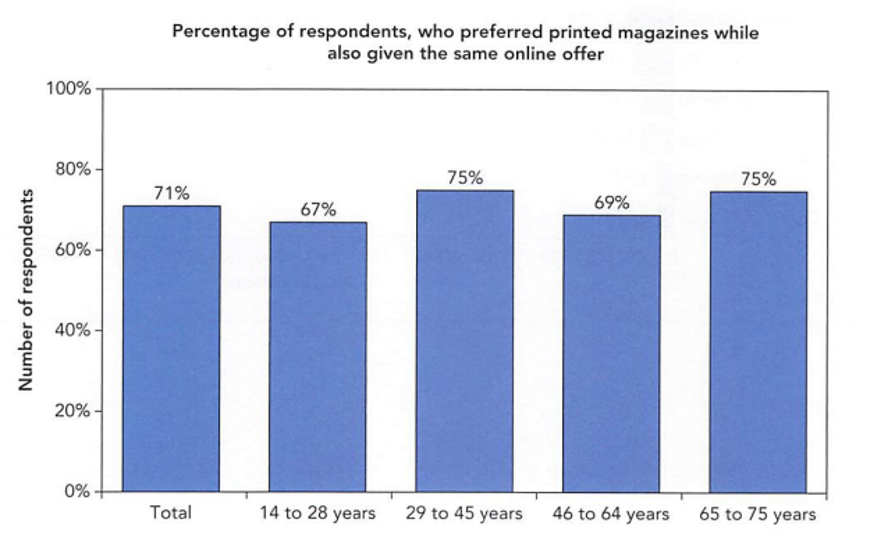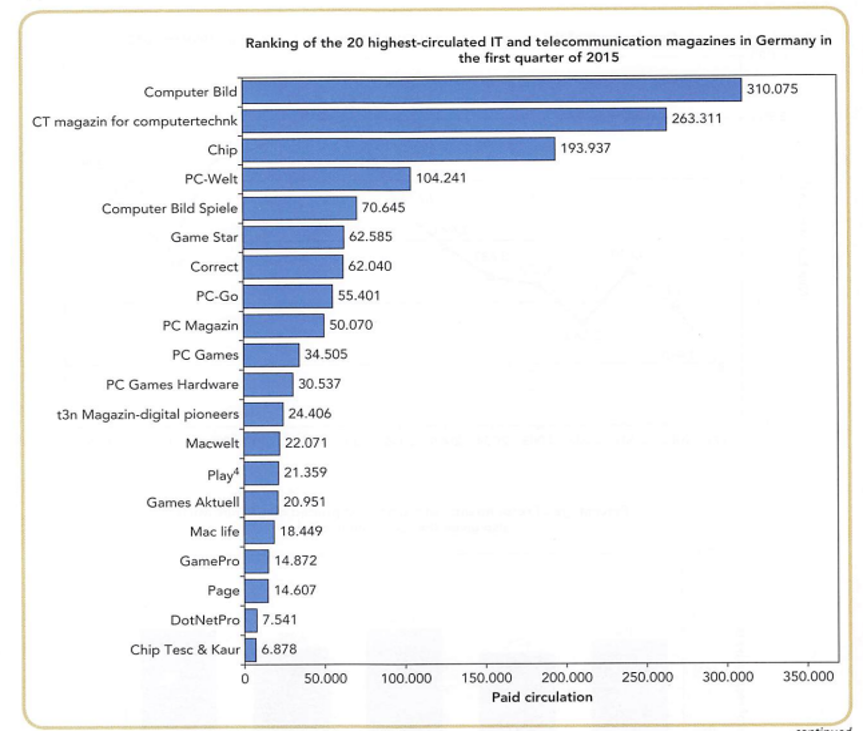Introduction
Heise Mediengruppe is a company that was founded in 1949 by Heinz Heise. Since its inception as a telephone book publisher, the company has undergone significant transformation. The company’s current headquarters are in Hannover, Germany. The company’s revenue in 2012 was 118 million, with 548 highly qualified and skilled employees (Bau et al.). The company is well-positioned in the industry with this revenue and skilled workforce. Like all other print media organizations, the company has been significantly impacted by the digital revolution, which has introduced free and easily accessible content, causing print media to decline. Despite the changes in the media industry, Ansgar Heise and Dr. Alfons Schrider of Heise Mediengruppe decided to develop new business models for the company that would bridge the gap between print media and the digital revolution (Bau et al.). The case study presented below critically examines the new models’ practicability, the company’s SWOT analysis, and the future of Heise Mediengruppe.
Situation Analysis
The case presented outlines the various forces that comprise Heise Mediengruppe’s overall environment. Social, economic, legal, and technological forces are examples. According to the point, for example, the paradigm shift toward digital news and the subsequent decline of print media news has been a powerful social force threatening the company’s traditional business models (Bau et al.). Despite the general public’s changing preferences, the company continues to adapt. In the case under consideration, the magazine c’t of Heise Mediengruppe remains the most subscribed-to IT magazine in Europe, regardless of the digital age (Bau et al.). The company has also focused on machine learning algorithms to publish on its digital platforms and online news portals. As a result, the company is very flexible to changes in the business environment.
It is also necessary to evaluate the state of the magazine publishing industry. Given that Heise Mediengruppe is based in Germany, the analysis focuses on the German industry. According to the case under consideration, publishers are finding it increasingly difficult to monetize their content, which has resulted in a drop in magazine sales (Bau et al.). Changes in demographics, changes in preferences, the emergence of new media formats, and the shift to fragment targets have contributed to the gradual decline in sales by publishers in the industry. Heise Mediengruppe, one of the industry’s publishers, is also overwhelmed with the negative change in sales. The print media industry has no choice but to embrace the difference in the audience’s preference for modern technology. The target audience for the industry uniformly shows a high priority for online magazines, as shown below, making it hard for the industry to stick with the old ways.

(Bau et al.)
In the industry, Heise Mediengruppe faces several competitors. According to the case of Heise Mediengruppe, Johannes Endres they have initially claimed that it had no competitors. The issue, however, focuses on ‘t,’ a German IT magazine (Bau et al.). The company’s competitors include CHIP Communications GmbH, which publishes CHIP magazine; Computer Bild Digital GmbH, which publishes Computer Bild magazine; and IDG Communications GmbH, which publishes PC-Welt magazine (Bau et al.). Below is a list of the competitors mentioned above of Heise Medien, indicating the strength that computer Bild, chip, and PC magazines have in the market. Computer Bild has a paid circulation of 310.075, while CT has a paid circulation of 263.311, as indicated below.

(Bau et al.)
In terms of the internal environment of Heise Mediengruppe, it has many advantages. According to the case under consideration, Heise Mediengruppe had 548 highly qualified employees in 2012. Because the company’s shareholders are also involved in management, the management structure is decentralized. Goal-oriented managers are also important drivers of any organization. Ansgar Heise and Dr. Alfons Schrider, the company’s managers, have done outstanding work developing new business models that benefit the organization greatly, especially in an era of the digital revolution (Bau et al.).
SWOT Analysis
Strengths
Heise Mediengruppe’s industry strengths include strong brand recognition and market reputation, strong business relationships with big tech companies and strategic engagements with advertisers, a large number of qualified journalists, a large team of skilled editors, and a diverse portfolio of media channels that include events, print magazines, and online publications (Bau et al.). Heise Mediengruppe has a robust online presence as well. Good leadership is also one of the company’s strengths, strengthening its organizational structure as well as the execution of new business models. A good team ensures that media content reaches the audience in a timely and high-quality manner. A solid online presence ensures that the company can receive reliable real-time feedback on the media content posted by the target audience. A strong media presence also ensures the company can diversify its revenue sources and earn money from advertisements. Strategic alliances also provide Heise Mediengruppe with solid growth potential.
Weaknesses
Some of the weaknesses of the company include overreliance on advertising revenues. Small audience compared to another gibber conglomerate, being limited to German might limit potential growth and strategic partnerships internationally. The company’s leadership has also been male-dominated over time, making it defined in terms of diversity. With the German print media facing the problem of a decline in sales dues to the rise in free digital content, the weakness of overreliance on advertising sales can only significantly impact the company’s profitability.
Opportunities
There are several opportunities that Heise Mediengruppe can use to grow and become more profitable in the industry. Because technology constantly evolves and the world’s media content preferences are shifting to digital content, the company can adopt new technology and deliver content to a larger audience. The main challenge that German print media companies face is a decline in sales. With technological advancements, Heise Mediengruppe can diversify its revenue source by including weekly, monthly, and even yearly subscription plans in its digital platforms. The company also has the potential to expand and grow globally and form strategic alliances with other publishers who have embraced new technology.
Threats
The case presents several threats to Heise Mediengruppe, including a drastic change in consumer preferences, a decline in print media due to the rise of powerful modern technology, and many competitors offering equally good content. Because of the reliance on free online content, the risk of preference change is exceptionally high. If the company does not diversify its revenue sources, it risks further sales decline. According to the case study, as shown in the diagram below, most people who prefer to read print media content are of a certain age (Bau et al.). The preference change is a threat because as the older population declines and the company does not adopt models of technology, it might continue witnessing a further reduction in sales.

(Bau et al.)
Strategy Formulation
The publishing house strategy is Heise Mediengruppe, led by Dr. Alfons Schrader, the company’s CEO (Bau et al.). The plan aims to develop new media content formats, including print and online. The company’s introduction of the platform wwwheise.de was a good strategy because it became the most critical and successful German-language news platform in IT. Its introduction was a successful strategy for the company because it targeted individuals who enjoy technology as a hobby. Heise Mediengruppe’s acquisition of Preisvergleich Internet Services AG, BestBoyZ, was also a good strategy because it allowed the company to develop new formats in an era of a digital revolution.
The other strategy the company put in place was launching techstage.de to target a young audience. Techstage.de offers content in different forms that audiences of various ages can resonate with. Another strategy implemented by the company was the launch of techstage.de, which targeted a young audience. Techstage.de provides content in multiple formats that audiences of various ages can relate to (Bau et al.).
The strategies that Heise Mediengruppe has put in place are excellent business models. In the ever-changing media industry and with the emergence of new technology, the plan will go a long way in ensuring that sales are increased and diversified, new audiences are realized, adoption of modern technology is, and also the realization of a paradigm shift in media content conveyance (Bau et al.). Other strategies include hiring more females to diversify the company’s leadership and give opportunities to even younger and more brilliant journalists. Another approach that could be implemented is hiring more online editors and publishers and using artificial intelligence to gather feedback from the target audience and correct any issues arising from their platforms’ use. The company could diversify its physical locations and enter new, less competitive markets to increase sales and expand the brand name beyond Germany.
In conclusion, it is evident from the case analyzed that Heise Mediengruppe has the potential to adapt to change as they offer both print and electronic media in an era of digital transformation. The German Magazine Market by circulation also shows that the company might continue facing competition even from uprising magazines in the industry. The paid circulation numbers have very close ranges, and some company magazines, such as C’t, might face stiffer competition in the industry. The company also has an excellent strategic formulation that will enable it to compete with the competitive industry. The company’s future success and market dominance thus depend on the ability to adapt to change.
References
Bau, Prof. Dr. Frank, et al. “New Business Models for Heise Medien: Heading for the Digital Transformation .” University of Applied Sciences HTW Chur , Hochschule fur Technik und Wirtschaft HTW Chur, Switzerland. Accessed 2 May 2023.
 write
write